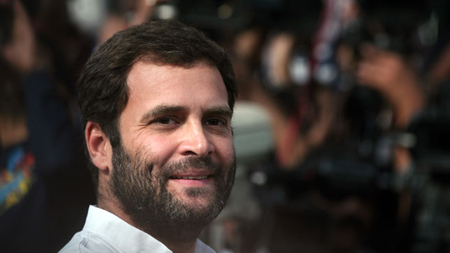
New Delhi, Mar 13: Buoyed by the triumph in Karnataka civic polls, Congress vice-president Rahul Gandhi has come up with a blueprint for ticket distribution and a publicity campaign to blunt opposition charges on UPA's corruption and failure to check price rise before the coming Assembly elections.
Gandhi is holding a meeting with Congress Karnataka unit president G Parameshwar and Legislative Party leader in Assembly Siddaramaiah on March 21 to apprise them of the campaign. Karnataka is the first big state where Assembly polls are due after Rahul became party vice-president.
He warned ticket aspirants against coming to Delhi for lobbying. He has left the decision of selection of candidates entirely to the state unit. He is learnt to have directed the Pradesh Congress Committee (PCC) to make constituency-wise lists of aspirants and send them to district and block units for approval.
After a block-level vetting, the district unit must send one name in each constituency to the PCC. In case more than one aspirant in any constituency is found suitable, the district unit can recommend two names. The PCC will select one name after consulting block leaders. This is mainly done to prevent alleged sale of ticket to loyalists by some vested interests, sources in the Congress told Deccan Herald.
Rahul said leaders from other parties are welcome to the Congress. But they will have to wait for at least five years to get party ticket. Those facing charges will not be allowed to join the party. Entry to party will be done only with the approval of block leaders.
Though 30 MLAs from different parties have expressed their willingness to join the Congress, Rahul told state unit leaders to wait for some time before taking any decision.
The party is also planning a publicity blitzkrieg in Karnataka highlighting the achievements of UPA II and explaining the need for taking hard decisions like petrol price hike and FDI in retail to counter the Opposition's propaganda. The exercise will start soon after the Budget session of Parliament.
Party advertisements will focus on Congress achievements in human resource development, rural development, health and family welfare, food, telecom and road transport.





Comments
Add new comment